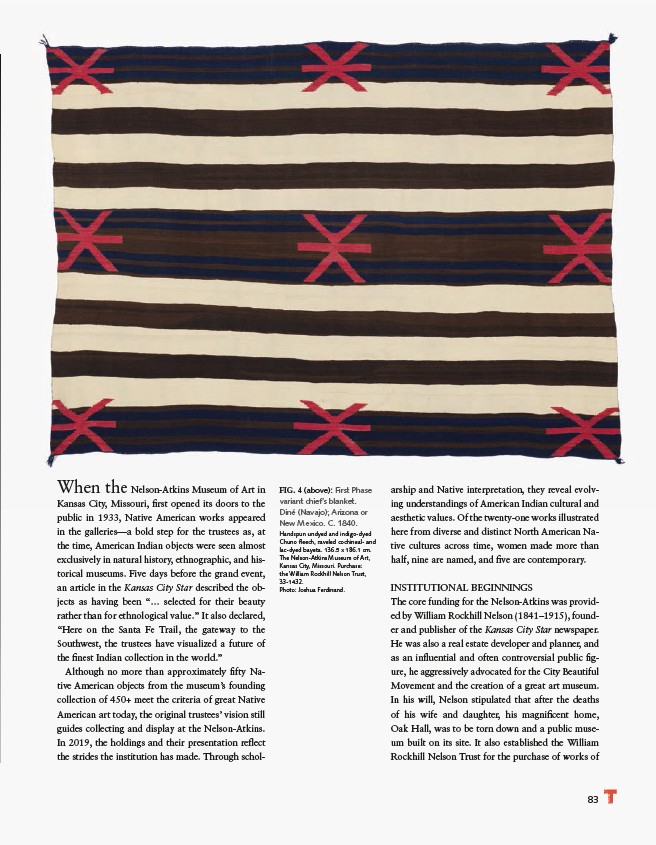
83
FIG. 4 (above): First Phase
variant chief’s blanket.
Diné (Navajo); Arizona or
New Mexico. C. 1840.
Handspun undyed and indigo-dyed
Chuno fleech, raveled cochineal- and
lac-dyed bayeta. 136.5 x 186.1 cm.
The Nelson-Atkins Museum of Art,
Kansas City, Missouri. Purchase:
the William Rockhill Nelson Trust,
33-1432.
Photo: Joshua Ferdinand.
When the Nelson-Atkins Museum of Art in
Kansas City, Missouri, first opened its doors to the
public in 1933, Native American works appeared
in the galleries—a bold step for the trustees as, at
the time, American Indian objects were seen almost
exclusively in natural history, ethnographic, and historical
museums. Five days before the grand event,
an article in the Kansas City Star described the objects
as having been “… selected for their beauty
rather than for ethnological value.” It also declared,
“Here on the Santa Fe Trail, the gateway to the
Southwest, the trustees have visualized a future of
the finest Indian collection in the world.”
Although no more than approximately fifty Native
American objects from the museum’s founding
collection of 450+ meet the criteria of great Native
American art today, the original trustees’ vision still
guides collecting and display at the Nelson-Atkins.
In 2019, the holdings and their presentation reflect
the strides the institution has made. Through scholarship
and Native interpretation, they reveal evolving
understandings of American Indian cultural and
aesthetic values. Of the twenty-one works illustrated
here from diverse and distinct North American Native
cultures across time, women made more than
half, nine are named, and five are contemporary.
INSTITUTIONAL BEGINNINGS
The core funding for the Nelson-Atkins was provided
by William Rockhill Nelson (1841–1915), founder
and publisher of the Kansas City Star newspaper.
He was also a real estate developer and planner, and
as an influential and often controversial public figure,
he aggressively advocated for the City Beautiful
Movement and the creation of a great art museum.
In his will, Nelson stipulated that after the deaths
of his wife and daughter, his magnificent home,
Oak Hall, was to be torn down and a public museum
built on its site. It also established the William
Rockhill Nelson Trust for the purchase of works of